If planners and ecologists found more ways to work together, would cities look different? Would they be better?
The idea of planning and designing urban spaces from an ecological perspective goes back to the very origins of the disciplines of ecology, planning, and design. Frederic Law Olmsted precipitated a landmark movement from “picturesque” to “natural” urban spaces at the same time as the nascent scientific field of ecology was beginning to take shape in its modern form.
In the 1960s, Ian McHarg famously exhorted urbanists to “design with nature”, a concept that has had a lasting influence on both the design and planning fields. The terms “ecological planning” and “ecological design” are ever more widely used, with many varied interpretations and applications. Many of these reside mainly within the planning, landscape design, or urban design/architecture disciplines. At the same time, the discipline of ecology as a branch of the life sciences has ventured further and further into cities and designed spaces, providing a rapidly growing body of information about how cities function as complex, human-dominated ecosystems.
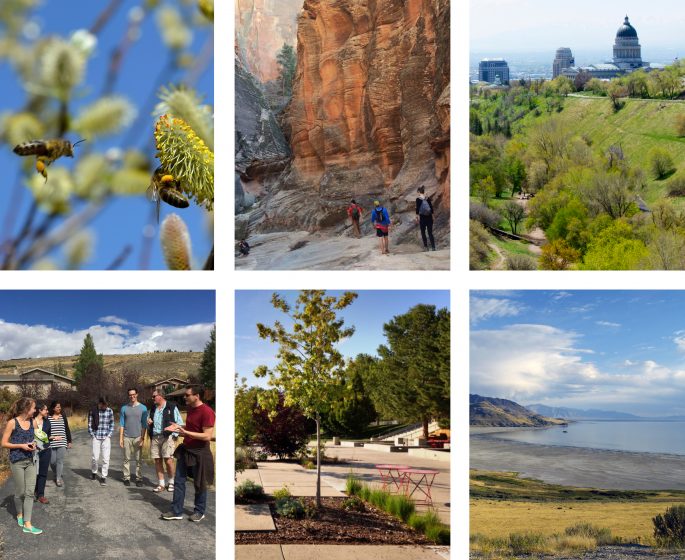
In theory, capitalizing on both of these trends in order to plan and design healthier, more sustainable cities should be a simple matter. Shouldn’t it? At first glance, one might recommend that the fields of ecology and planning simply communicate with one another. But, they don’t – at least not enough. The contact between the disciplines rarely occurs as a direct collaboration between practicing ecologists— whose job is to generate new scientific understanding—and practicing planners, whose job is to envision and plan better cities. The more frequent points of contact are either through education, where planners may take classes that convey ecological principles, or through professional interactions having to do with site and/or environmental impact assessment. Ecological planners use the best available information within their field to create places that account for social, environmental, historical, and geographic contexts. However, due to the slow and indirect paths flow of scientific information to non-scientists, they may not be aware of the most recent advances in the field of urban ecology, which has seen a rapid proliferation in the scientific literature. At the same time, ecologists making scientific observations in and about cities will have a very incomplete understanding of how cities grow and function without a thorough grounding in the local planning, political, and cultural context.
So, these fields clearly stand to benefit from one another, but how in practice can and should they interact? Opportunities for joint teams of planners and scientists to re-envision urban spaces together are rare in reality. But when they do occur, the outcomes can be very different than the status quo.
Ecological planning of an urban stream
To use a simple example, our university recently solicited a master plan to improve a stream that runs through campus property. Positioned at the boundary between a protected natural area in the Wasatch Mountain range and the highly urbanized neighborhoods of Salt Lake City, the University of Utah has long sought to establish its identity as a place at the urban-wildland interface in the U.S. intermountain west. Initially, ecologists proposed that the campus “restore” the highly degraded stream that traverses its wild-to-human-dominated gradient. Stream restoration, they argued, would bring ecological and environmental benefits, such as wildlife habitat and improvements in water quality. To achieve this, many scientists envisioned the removal of built structures and exotic vegetation in favor of more “pristine” plantings of native vegetation. For planners, however, a re-imagined campus stream had quite different connotations, including opportunities to improve the campus transportation network with bicycle and walking trails, and recreational spaces to enhance human access to the riparian zone. On the surface, these visions were incompatible: one aimed to optimize “non-human” habitat by isolating the space away from human use, and the other meant to increase visitation and enhance the function of the riparian zone for traffic and recreation.

In the end, an ecological planning process that included both groups resulted in a different vision entirely. Faced with opportunities to increase human access to “wilder” spaces for education and to enhance well-being, many scientists will quickly acknowledge that there are numerous benefits to designing wilder spaces with human access in mind. From an urban ecological perspective, these benefits may outweigh the impacts of adding well-designed trails, access points, and built structures to a revitalized urban space. A combined vision of the campus stream that incorporated expert opinions in native plant and wildlife management, stream geomorphology, and nutrient cycling—but also allowed for construction of a new trail and other built structures—quickly became palatable to the scientists on the planning team. Notably, this can require a significant shift in ecological thinking outside the common paradigm, in which “pristine” is best and human access to wild spaces always results in ecological degradation. Although urban ecology has made substantial inroads into the mainstream of ecological science in recent years, the “pristine” paradigm is still quite prevalent in the United States.
At the same time, scientists were able to discuss the state and nature of ecological uncertainty with planners and designers. The high degree of scientific uncertainty in many environmental best practices, such as restoration methods and low impact development, is rarely discussed in conventional plans. However, deliberate strategies to reduce this uncertainty can be a central feature of ecological plans. In this case, the team discussed the knowledge gaps in stream restoration and stormwater management in desert cities. While reducing streamflow by increasing stormwater infiltration is widely accepted as a method of slowing stream erosion and degradation, studies of how best to do so originate largely from wetter areas that are not limited by rainfall. Salt Lake City, positioned in the Great Basin Desert of the United States, receives virtually no summer rainfall. Therefore, establishing new plantings, bioswales, and raingardens to increase infiltration with no or minimal irrigation is a challenge. However, rather than ignore or overlook these uncertainties, our ecological plan addressed them head on by treating each phase of plan implementation as an opportunity to test and monitor different stormwater management strategies, incorporating new knowledge and lessons learned into each iteration. Variously called adaptive management, resilience planning, or designed experiments, the plan-as-experiment approach is ideally suited to joint teams of planners, designers, and scientists who are involved in planning, monitoring, and managing all phases of the process, from conceptualization to implementation and performance evaluation.
As of this writing, the plan that resulted from the University of Utah’s planning process, led by the University’s Ecological Planning Center, is available for public comment. The first phase of implementation has already begun, with the design of a 15-acre parcel that is positioned directly along the stream. The resulting physical space is quite unlike anything that either scientists or planners had separately envisioned early in the process. Both replicated experiment and picturesque garden, this recreational and functional “landscape lab” will test the performance of two different bioswale designs that will replace an extensive, heavily irrigated, and intensively fertilized lawn. The site will include paths and seating spaces for occupants of nearby buildings, as well as the first segment of a new streamside bicycle and pedestrian trail. The plantings are meant to be water efficient and climate appropriate, but their establishment success, water use, and capacity to absorb runoff and pollution will be measured directly in fully replicated experimental plots. The results will inform future phases of plan implementation, with the goal of reducing campus irrigation and stormwater runoff using strategies that are increasingly tuned to the local environment and ecosystem. At the same time, the plan will bring larger numbers of visitors to the stream, which historically has not been safely accessible for students and university classes, let alone the larger Salt Lake City community. The impacts of recreational use will also be monitored, along with the responses and perceptions of visitors to particular aspects of the steam, the riparian area, and the surrounding landscape, including both designed and non-designed features.
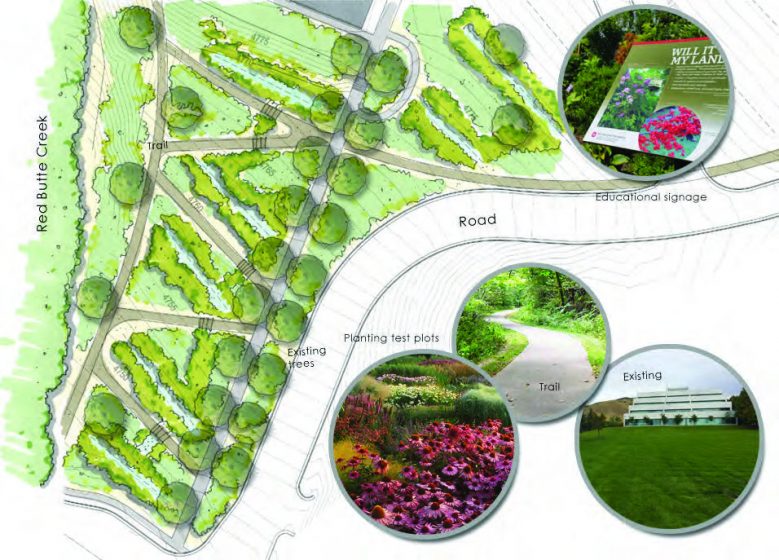
Scientists as stakeholders
Through this process, we note some significant areas in which scientists and planners were both pushed out of their usual “comfort zones” by the ecological planning process. For many types of scientists, the notion of creating urban spaces or “human habitat” can be discomforting. Traditionally trained to be objective observers, scientists involved in ecological planning will contribute to decisions that shape the environment in novel ways that are neither strictly “natural” nor entirely human-built. This may require a more active role in shaping decisions and places than is the norm in science (invoking many historical and ongoing debates about boundaries between science and advocacy).
In addition, planning decisions are inherently normative and context-dependent. There are no clearly right or wrong answers (although planners and urban designers often seek to implement “best practices”), and many decision-making criteria are value-laden and highly dependent on political and cultural contexts, the degree of inclusivity, and who is at the table and empowered to contribute. Many decisions and outcomes will seem “unscientific” and not entirely, or even largely, driven by technical or biophysical concerns. The role of people and communities is inherently at the center of urban ecological planning, leading to difficult choices about the balance among the needs of many constituencies. Currently, scientists have little training to contend with such choices, and have much to learn from methods and lessons in adaptive and community planning.
Planned uncertainty
For planners, the merger of planning with ecological science requires a shift from focusing on what is known to what is not known—from “best practices” to “best possibilities”. Ecological approaches to planning are not one-size-fits-all solutions, but must be tailored to the uniqueness of a place. Cities as social-ecological systems are complex, self-organizing, and adaptive, and may display unexpected and surprising behavior. This leads to the possibility that planning decisions intended to achieve a particular goal may result in unexpected and sometimes unwanted outcomes, or simply fail to perform as desired (for example, relocating a flooding problem to another location rather than reducing flooding, or unintentionally displacing low-income populations).
Ecological planning can diminish the likelihood of unwanted outcomes over time by targeting key areas of uncertainty with well-planned experiments and observations in which planners and scientists collaborate to share ideas, information, and options for adaptive planning and management. This may lead to different types of plans and spaces that intentionally include “riskier” strategies, with the understanding that under controlled and well-monitored conditions, “failures” can offer important lessons for the larger planning process. In essence, we assert that it is better to fail at a small scale and under relatively controlled conditions than by widely implementing plans and strategies before they are well-tuned, monitored for performance, and evaluated for local conditions. In the case of stormwater management near an urban stream, this means testing new and locally-tuned bioswale and landscaping configurations in a small area using the best available measurement and monitoring methods, with safeguards in place to mitigate possible flooding and overflows. In the long-term, this method has the potential to be more effective than importing designs and strategies from other regions and widely implementing them at scale, without fully exploring possible unintended consequences.
Looking ahead
Ecological planning as a partnership of planners and ecologists is, in itself, an experiment. Scientists and planners working together to plan with nature produce outcomes that are different than conventional planning and ecological science alone. But are they better? It’s probably too early to say. Can several decades of studying such relationships in cities contribute to planning more healthy and resilient urban spaces? Can active participation of ecologists in the planning process generate and disseminate ecological understanding more effectively? The is probably yes, but only the results of the experiments underway to monitor and document the outcomes will provide answers in the years to come.
To make these experiments more common, planners and scientists need spaces to work together. Universities are an obvious place to provide these, but this can also happen in professional planning contexts. Most importantly, these collaborations work best when scientists and planners share the same goal of making cities better places to live by applying our best understanding of how cities work and how natural and built spaces interact. For scientists, this means expanding beyond the creation of knowledge and into the creation of places. For planners, this means embracing the notion of places as experiments to produce knowledge that may go beyond their training in planning theory and practice. Place-making and knowledge-making have always been intimately tied together, but the paths from one to the other are commonly slow and indirect. Connecting them more directly provides a critical tool to improve the health and well-being of both the human and non-human components of cities and places.
Diane Pataki, Sarah Hinners, and Robin Rothfeder
Salt Lake City
about the writer
Sarah Hinners
Sarah Hinners is a landscape and urban ecologist focused on bridging the gap between academic research and real-world planning and design applications. She is the Director of Research and Conservation at Red Butte Garden and Arboretum in Salt Lake City, Utah.
about the writer
Robin Rothfeder
Robin Rothfeder studies water resources planning, policy, and management in arid urban areas as well as history, theory, and practical applications in the emerging field of ecological planning.

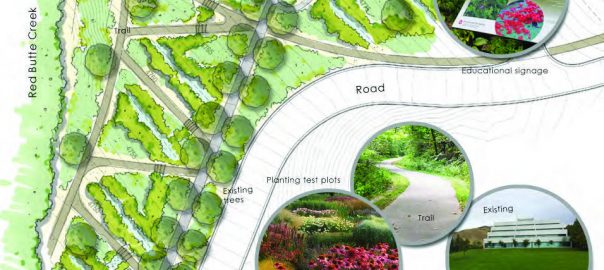




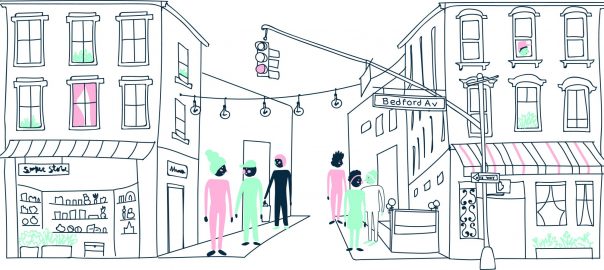


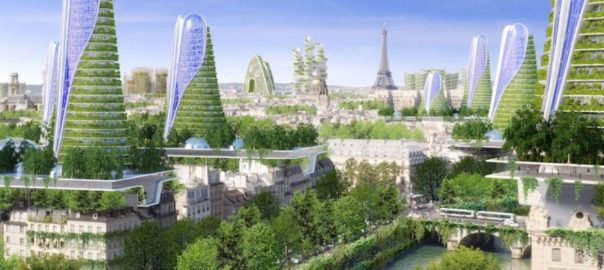
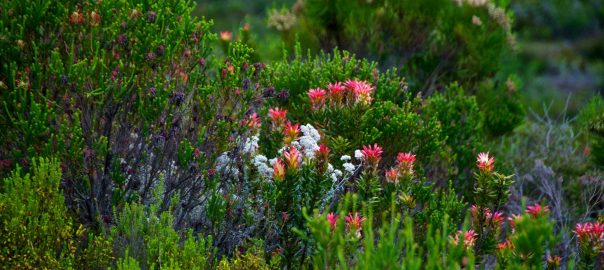
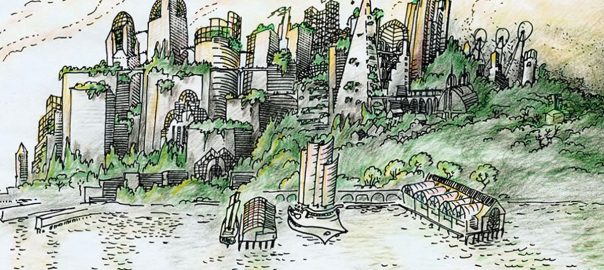
Great article, Diane. I like the mention about designing for a series of open possibilities–effectively building more of a framework than a finished product and in doing so, figuring out ways to put nature back in the driver’s seat for how the space (and its respective ecologies) will evolve over time. It’s true, this is a tough nut to crack for designers that are trained to produce specific solutions rather than conditions that foster an open-ended outcome.
I think James Corner is a noteworthy example of a Landscape Architect that has embraced ecological design. His writing and his work speak to his experience in driving designs with a looser grip on the wheel as well as approaching with the foresight that his own designs will evolve and change over time as nature dictates their subsequent life cycles.
Thanks again!
Not only is ecological design important, the very survival of humankind in reliant upon it, to ensure our survival as a species!
That’s a great idea! We’re taking a similar approach with water, but we hadn’t discussed the maintenance expenses. Actually, comparing maintenance costs before and after will be interesting…
May I make a suggestion. In the maintenance plan – calculate how much it would cost to have a majority of turfgrass mowed, then eliminate some portion of this, calculate savings, and then use savings to monitor and manage.
Good question. This project came up rather abruptly as an opportunity and we are in the midst of making institutional and financial shifts to accommodate the essential long-term commitment. The brief answer is, no, there is not a single dedicated long-term funding source for the entire research agenda for the next 15 years (which would be ideal!). We are working on creating an institutional home for the Landscape Lab as a facility, probably in our Center, the Ecological Planning Center. However, aside from its research functions, it is also the landscaping for a major piece of campus property, so it will be maintained by property management (as per design recommendations for maintenance) regardless of how much active research we do there. So, we have some flexibility to seek grants or other support for particular research activities. We also have miscellaneous sources of support for basic data collection/monitoring, and a good number of regular courses that have been working on Red Butte Creek and who will continue to engage with it, including regular data collection. So, to summarize, there is some uncertainty, but there is also some institutional commitment. We anticipate, optimistically, that the initial investment will leverage further funding.
To add to Diane’s comment, I agree that landscape architects are crucial people to have at the table, particularly because they have some training in ecology and environmental science so they have a basic language in common. The same is true for environmental engineers. While every project is different, at our center we think broadly about the critical elements in terms of People, Place and Design, thus we need people at the table with the ability to: study social systems and develop understanding of the culture and values of the place; people with expertise and ability to study the biophysical systems of the place such as climate, ecology, hydrology, etc; and people with design expertise at the appropriate scale (site, building, landscape, etc.) who can bring ideas into physical reality. While landscape architects certainly use ecological knowledge, I know very few who consciously generate ecological knowledge – it just isn’t part of their process – they are focused on creating a landscape, a physical manifestation in the world. I guess what I’m getting at is that I would see LA not necessarily as a “bridging” discipline, but as a core one, occupying the Design seat. If we use the term “landscape design” it is a product of the fact that we may work on projects in which the Design seat is occupied instead by an architect, an engineer, or an urban designer. But you are correct that in this case, landscape architecture was the key design discipline.
Ah yes – landscape architects were crucial in this endeavor! Alex Felson at Yale has written extensively about the specific process by which scientists can collaborate with landscape architects at the scale of site planning in the “designed experiments” literature, so we cited it but did not cover it in depth here. We should definitely note that when the master plan began to be implemented, the site plan shown in the article was developed by the wonderful designers at VODA Landscape + Planning, with input from the science and planning teams. They were extremely open minded and helped us develop a site plan that preserves aesthetic qualities of the site while also incorporating scientific principles of experimental design, as well as the overall goals of the master plan. The key in our case was to ensure replication and an adequate sample size into site planning, so that measurements of the different types of stormwater treatments could be analyzed statistically. Conversely, scientific experiments of this nature are often rather unpleasant places from a recreational and aesthetic perspective; the landscape architects helped ensure that the site would still attract visitors to the riparian area through careful design.
I was interested in this article. Embracing uncertainty is very difficult on both sides and building into a design – monitoring and management are critical. Having monitoring and management built into the design is critical and was not sure how it was in this example? Could you describe? Is there long term funding associated with monitoring and management? cheers
You have eloquently expressed the very real need for true collaboration among the design/planning and environmental science disciplines to address the diverse scales of responsible land use. The need to find nature-based solutions to the negative impact of modern man within his environment is no longer simply a desire. It is becoming an imperative as we recognize our place in the what some term the “Anthropocene Era”.
As a planner that heavily relies on a “landscape architecture approach” in my work, I naturally see the connections and concerns you have illustrated and the obstacles that “silo” mentality presents in the advancement of responsible environmental planning and design, nearly every day. Cross-pollination of the disciplines in our universities is an admirable goal and one that holds hope for us in future generations. Where opportunities can be exploited, there are some forward thinkers out there today pushing the envelope in collaborative practice for better environmental results.
I recommend that you look to the Rockefeller Foundation “Rebuild by Design” coastal resilience projects for the kind of collaborations that you are encouraging. There is also the beginnings of prioritizing ecological concerns and nature-based solutions in the SITES site design criteria that you will find interesting. In fact, a new offering from the Lincoln Institute of Land Policy “Nature and Cities: the Ecological Imperative” compiles some of the emerging work in line with your thoughts.
I am very happy that you favorably name two icons of landscape architecture, Frederick Law Olmsted and Ian McHarg, for bringing the concept and process into the design realm, though I am slightly disappointed that you neglect to name landscape architecture as a “bridging” discipline for collaborative efforts to bring these concerns to the table in land planning. The tendency to use “landscape design” as a place holder for this profession is not helpful to either practice type.
Were there no landscape architects at the table in the Red Butte Creek study?
That’s an excellent point. At our university this is something we really want to address in our training of both planners and ecologists but it’s definitely slow to change.
As a recovered planner, this essay is a lovely sentiment but can happen rarely in real life. Planners are not trained in these disciplines and almost no one is trained to speak to (and sit and listen to) planners.
Thanks for sharing this example Bruce.
An example of the outcomes that can be achieved when planners and ecologists collaborate can be found at http://bruceboyes.info/2004/03/biodiversity-recovery-plan-for-gatton-and-laidley-shires-south-east-queensland-2003-2008/
An excellent article. You make the really critical point that “decision-making criteria are value-laden and highly dependent on political and cultural contexts”. That is true in almost every context but rarely acknowledged.
For example a neighbourhood might want lovely big trees, safe streets for children to walk, spaces to sit and chat, an absence of pollution and noise from cars (http://www.monbiot.com/2016/11/09/one-way-street/) etc while planners might focus on moving people and goods fast and cheap. It is striking how alienated every day urban life is from the very things that make the human happy – community, peace, beauty, wild plants, wild animals, wild birds etc One has to ask what are urban planners really trying to do! And why are ecologists not doing more to encourage a healthier relationship between urbanites and the wild? Articles like this make us think more deeply…..thank you.